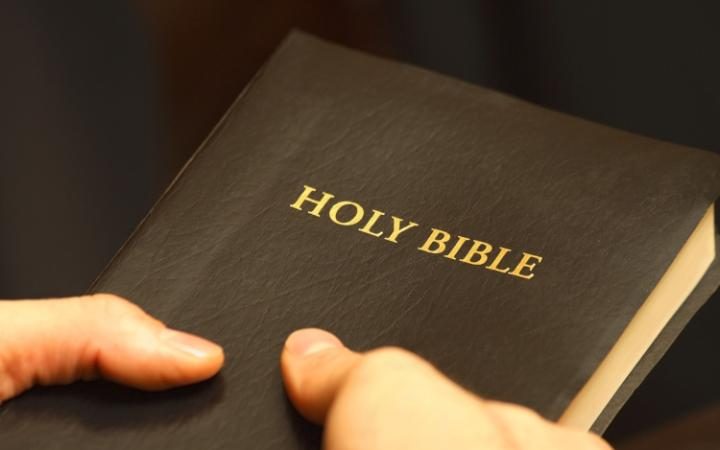Introduction to the Seven Seals in Revelation 6: 7: 8:
The following theologians George Eldon Ladd and Ranko Stefanovic who have written commentaries on the chapters of the Seven Seals in the book of Revelation, have done so with speculation and not a correct exegesis with the whole of the Bible.
For example Ladd in his book, “A Commentary on the Revelation of John,”[1] writes about the first seal in Rev 6:1.2. Without doing a thorough exegesis on the word “seals” and the word “horses;” he goes straight into suggesting what other theologians have written in their commentaries, by saying e.g. most interpreters, usually, this horse is said, some feel that the clue to the interpretation, other interpreters have pointed to the obvious similarity and so on.

What is exegesis? The famous and time-honored Reformation principle repeated in modern times, namely that “Scripture is its own interpreter” or “the Bible is its own expositor,” derives fully from Scripture (for example, Luke 24:27, 1 Corinthians 2:13, 2 Peter 1:20). It means that, “Scripture interprets Scripture,” that one portion of Scripture interprets another, becoming the key to other, less clear passages. This procedure involves the collection and study from all parts of the Bible, of passages dealing with the same subject so that each may aid in the interpretation of the other[2].
The proper method of exegesis of God´s word entails, word studies not from Kittel´s Theological Dictionary or from Botterweck and Ringgren´s Theological dictionary. Why? Because these men are not perfect, and they come to their word studies with presuppositions which all theologians do. However, your presuppositions may not agree with theirs; so it is best to do your own word studies of the whole Bible from Genesis to Revelation, and it is best to do your own syntax study of Bible passages, going back to the original Hebrew or Greek etc. This does not only mean studying the time period of the text, but involves all time periods of the whole Bible. When all the ground work is done in your personal exegesis, then you can compare your findings with the study of other theologians and commentaries on the subject, but not before.
The tendency today is to skip the long tedious study of word studies, with syntax from the whole of the Bible and instead, quote some well known theologian, who has already studied the passage thoroughly. This method is wrong, but it is used and accepted in all protestant universities worldwide, because it saves time.
This kind of Bible study white washes Bible teachings and enables one theologian to have an authoritive meaning on a text, and another theologian with another meaning on the same text. These studies create double meanings and confusion into the understanding of the Bible text in question.
This is the kind of study, which is used in George Eldon Ladd´s “Commentary on the Revelation of John,” and many other Bible commentaries.

George Eldon Ladd
In addition, Ladd does not do an extensive word study on “horses” from the whole of the Bible, but gives an example of horses used amongst the Parthians. “The Parthians were a warlike people living in Asia southeast of the Caspian Sea in the region of what is today Iran. They were famous in war as horsemen for the swiftness of their mobility etc.”[3]
Furthermore, Ladd goes on to settle for an explanation to the white horse in Rev 6:2. He states, “Many commentaries have pointed out that there is a similarity between the structure of the seven seals and the Olivet Discourse in Mark 13 and Matthew 24.”[4] The problem with this explanation is the Olivet Discourse does not mention one horse in its entirety. Ladd goes on further to say about the white horse: “The rider is not Christ himself but symbolizes the proclamation of the gospel of Christ in the world.”[5] This is pure speculation and cannot come from an exegesis from the Bible.
In addition, Ladd states about the rider of the white horse, “The crown is a symbol whose meaning is expressed in the words; he went out conquering and to conquer. This does not necessarily mean complete and utter conquest.”[6] This crown which is “stefanos” in the Greek, means a crown of victory used in military victories, and the word does not indicate partial conquest as stated by Ladd, but complete victories.

Another theologian from Andrews University, Berrien Springs, Michigan, Ranko Stefanovic agrees with Ladd on the meaning of the white horse in his book “Revelation of Jesus Christ:” He is virtually reiterating what Ladd has said. Stefanovic also uses the term “according to many commentaries etc.”[7] Again, there is no word study on “horses” from the whole of the Bible or even an exegesis. It seems like that his explanation of exegesis is what other commentaries reveal about the passage in the Bible, avoiding an in depth time consuming study of the whole of the Bible itself.
Having analyzed these two theologians method of study on the white horse of Rev 6:2, I did a word study on “horses” from the whole of the Bible. The result was that the majority of horses in the Bible were used for warfare: battle horses with weapons. Nowhere does the Bible suggest that a white battle horse was used for the proclamation of the gospel as Ladd and Stefanovic suggest.
In addition, the more I study the writings of Ellen G. White in what she has to say about the Seven Seals in Rev 6: 7: and 8:, I am convinced that she is more accurate than most modern theologians of our time on a this subject. Therefore, I shall use my prerogative as the writer of this study to use her writings as to throw light on the Bible text and not use her writings as a substitute of the Bible text. She says herself that her writings should be used as a smaller light shining to a larger light namely the Bible.
When using the writings of Ellen G. White on the Seven Seals in the book of Revelation she suggests that the first and the fifth seals refer to the future. Therefore, according to this study, the seven seals refer to events taking place just before the Second Coming of Christ and thereafter. For example, the first four seals refer to the judgments on all unbelievers on the earth, and the next three seals refer to the 144,000 and some events that take place before the Second Coming of Christ.

Word study on ”seals” in relation to the seven seals in Rev 6: 7: 8:
Rev 5:1 And I saw in the right hand of him who sat on the throne a scroll written inside and on the back, sealed with seven seals.
Rev 5:2 Then I saw a strong angel proclaiming with a loud voice, “Who is worthy to open the scroll and to loose its seals?”
Rev 5:5 Behold, the Lion of the tribe of Judah, the Root of David, has prevailed to open the scroll and to loose its seven seals.
Rev 6:1.2. Now I saw when the Lamb opened one of the seals; and I heard one of the four living creatures saying with a voice like thunder, “Come and see.” The first seal reveals a white horse and the rider had a bow.
Rev 6:3.4. The second seal reveals a fiery red horse and the rider had a great sword in his hand.
Rev 6:5.6. The third seal reveals a black horse and the rider had a pair of scales in his hand.
Rev 6:7.8. The fourth seal reveals a pale horse and the rider was named Death and Hades followed with him.
Rev 6:9-11. The fifth seal reveals souls under the alter crying out, “How long will you O Lord avenge our blood?”
Rev 6:12-17 The sixth seal reveals the signs in the cosmos and judgments upon the unbelievers on the earth before the Second Coming of Christ.
Rev 7:2 Then I saw another angel ascending from the east, having the seal of the living God.
Rev 7:3 Do not harm the earth, the sea, or the trees till we have sealed the servants of our God on their foreheads.
Rev 8:1 When he opened the seventh seal, there was silence in heaven for about half an hour.
Rev 9:4 (The subject is locusts) They were commanded not to harm the grass of the earth, or any green thing, or any tree, but only those men who do not have the seal of God on their foreheads.
Rev 10:4 Seal up the things which the seven thunders uttered, and do not write them.
Rev 20:3 he cast him into the bottomless pit, and shut him up, and set a seal on him (Satan) – – -.
Rev 22:10 Do not seal the words of the prophecy of this book, for the time is at hand.
Rom 4:11 And he received the sign of circumcision, a seal of righteousness of the faith which he (Abraham) had while still uncircumcised – – -.
1 Corinthians 9:2 (To the believers in Corinth) For you are the seal of my apostleship in the Lord.
2 Timothy 2:19 Nevertheless the solid foundation of God stands, having this seal: “The Lord knows those who are His” and “Let everyone who names the name of Christ depart from iniquity.”
Matthew 27:66 So they went and made the tomb secure, sealing the stone and setting the guard.
John 3:33 He – – – has set his seal that God is true.
John 6:27 The Son of Man will give you, because God the Father has set His seal on Him (Christ).
Romans 15:28 Therefore, when I have performed this and have sealed to them this fruit – – -.
2 Corithians 1:22 (Christ and God the Father) who also has sealed us and given us the Spirit in our hearts as a guarantee.
Ephesians 1:13 you were sealed with the Holy Spirit of promise.
Ephesians 4:30 Do not grieve the Holy Spirit of God, by who you were sealed for the day of redemption.
Dan 9:24 to seal up the vision and the prophecy.
Dan 12:4 seal the book, to the time of the end.
Dan 12:9 the words are closed up and sealed till the time of the end.
Conclusion
Seal is related to the following: Righteousness, apostleship, the Lord knows those who are his, scroll with the seven seals, Christ can only open the seven seals, seal of the living God, seal of God on their foreheads, God is true, the father has set His seal on Christ, sealed with the Holy Spirit, sealed to the day of redemption, seal of the bottomless pit, seal the words of prophecy, seal up the vision, seal the book, words were sealed to the end of time.
[1] George Eldon Ladd, A Commentary on the Revelation of John (Grand Rapids, Michigan: William B. Eerdmans Pub. Co., 1972), 97-100.
[2] Gerhard F. Hassel, Biblical Interpretation Today (Washington D.C.: Biblical Research Institute, 1985), 102.103.
[3] Ladd, A Commentary on the Revelation of John, 97.
[4] Ibid., 98.
[5] Ibid., 99.
[6] Ibid., 99.
[7] Ranko Stefanovic, Revelation of Jesus Christ (Berrien Springs, Michigan: Andrews University Press, 2009), 232.233.